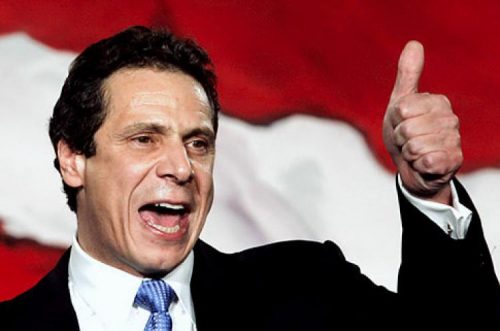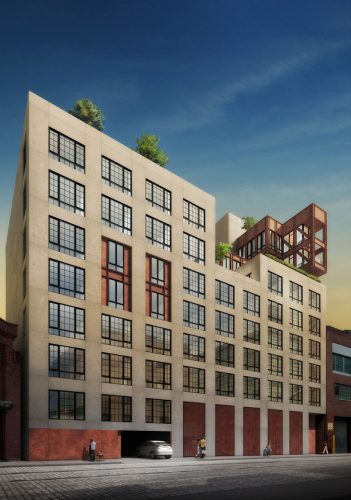New York City is undeniably facing a housing affordability crisis. In a recent interview, Jonathan F.P. Rose, founder and president of Jonathan Rose Companies and the Cornell Real Estate Council’s 2017 Industry Leader Award recipient, estimated that New York City has a shortage of 800,000 affordable housing units – equating to 26% of New York City households lacking affordable housing. What does this lack of affordable housing look like statistically?
According to the 2016 Income and Affordability Study published by the New York City Rent Guidelines Board, the median gross rent to income ratio in NYC was 33.8%, the highest level recorded in the history of the survey. This means that well over half of NYC renter households are paying more than the 30% rent to income threshold that has been traditionally considered to represent affordability. Further, 33.5% of New York City rental households are considered “severely rent burdened,” meaning that they pay over 50% of their monthly income for rent.

In an effort to combat the affordability crisis, New York State lawmakers voted in April 2017 to revive the 421-a tax abatement program as part of the state’s $163 billion budget under the new moniker Affordable New York. According to New York City’s Independent Budget Office, 421-a was responsible for 157,100 affordable housing units from the program’s inception in 1971 until its 2015 expiration, a rate of 3,570 units per year. Governor Andrew Cuomo’s office estimates that the new program will generate approximately 2,500 new affordable housing units per year.
So how does the program work, what changes were enacted in its extension, and is this the best (read: most cost effective) way to add affordable housing units to the housing stock?
Rules of the Affordable New York Housing Program
The new Affordable New York Housing Program covers projects that commenced construction beginning January 1, 2016 and that must be completed by June 15, 2026, along with projects that qualified under the previous 421-a tax abatement program but have not yet received benefits. The basic idea of the program is simple: in exchange for setting aside affordable units in a new residential development, the entire project receives a property tax abatement for a set number of years (under the new program, this means up to 35 years of abated taxes).
The program gets a little more complicated when one begins to consider that there are six qualifying rental housing options and a qualifying homeownership option, or that specific areas are designated as Geographic Exclusion Areas or Enhanced Affordability Areas. Nonetheless, the concept and purpose of the program remain the same.
Debate Over Changes from the Previous 421-a Tax Abatement Program
There are three key changes from the previous 421-a program to the new Affordable New York program that are of significant interest and debate:
- The maximum tax abatement period increases from 20 to 25 years under the old program to 35 years under the new program.

The Municipal Art Society of New York City (MASNYC) put together a comprehensive map of projects developed under the 421-a program, detailing each property’s assessed value, abated value, length of tax exemption, and estimated foregone tax revenue. Take for example 205 Water Street, a 67-unit luxury condominium building located at Brooklyn’s DUMBO neighborhood, which was granted a 15-year exemption under 421-a in exchange for delivering 13 off-site affordable units. According to MASNYC, the estimated foregone tax revenue for this project in 2014 was $465,346, or $6.98 million over the course of 15 years assuming no tax growth. In terms of present value, this equates to approximately $4.24 million in added value resulting from the tax abatement utilizing a 7% discount rate, or only $0.61 per $1.00 of tax abatement granted. If this abatement were extended to 35 years, the property would receive $16.29 million in tax abatements equating to a present value of only $6.03 million, or $0.37 per $1.00 of tax abatements.
The present value of this tax reduction effectively equates to the additional value a developer would be able to borrow on and therefore use to develop affordable units, thus meaning that the extension of the abatement term is resulting in a lower percentage of foregone tax dollars being used to construct affordable housing. Further, only a portion of this funding goes toward affordable units while the majority goes toward funding the non-affordable units.
In addition, policymakers would want their constituents to look at this increased present value of tax abatements as an incentive for developers to build new affordable units. However, from an urban economics perspective, this increase in value from the change in public policy would mean that land prices should theoretically increase as land is a fixed quantity and the benefits to the land are increasing. In a market like New York where high land prices already preclude affordable housing development in many areas, this potential increase in land value could have the opposite impact that the policy intends.
- Projects constructed under the new program will require an average hourly wage (including benefits and employer taxes) of $60.00 in Manhattan and $45.00 in Brooklyn and Queens.
We can debate whether union labor is positive or negative, but the fact remains that New York has long been a union city and union lobbying no doubt played a role in this new rule. The end result is that construction costs rise, making it more difficult for projects to reach feasibility. In the context of affordable, publicly subsidized housing, this means that more tax dollars (in this case foregone tax dollars) will be directed toward supporting union laborers rather than the actual construction of affordable units.
- Final approval of tax abatements is not granted until projects are completed and proof of meeting prevailing wage requirements is provided.
Practitioners argue that this change has no material impact on the ability to finance projects, but the fact remains that lenders underwriting a higher value based on the reduction in taxes remain at risk until the project is completed and wage requirements are officially met. Those active in the affordable housing industry consistently argue that the relationship between lender and developer is one of the most important factors in projects achieving financing, and with this extra layer of trust to meet wage requirements now existing, this argument is further strengthened. For developers with a lesser track record for completing projects according to plan, this may limit the availability of debt financing or at least the cost of capital.
————————————————————————————–
In a world where (re)urbanization continues and the majority of global population growth over the coming decades will take place in cities, access to affordable housing will continue to grow as a global issue. Policymakers will continue to tell their constituents that their tax dollars are going to good use, but when we dive deeper into the actual flow of money we find the real answers. In the case of the Affordable New York Housing Program, tax abatements are clearly benefitting labor unions while reducing the percentage of foregone taxes that result in increased financeable property value, meaning less of the abated tax dollars will be used to fund affordable housing development. Further, smaller, entrepreneurial developers will find it harder to finance projects, thus benefitting the larger players in the market.
Who do you think will be lobbying for the program’s extension when it expires again in 2022?
